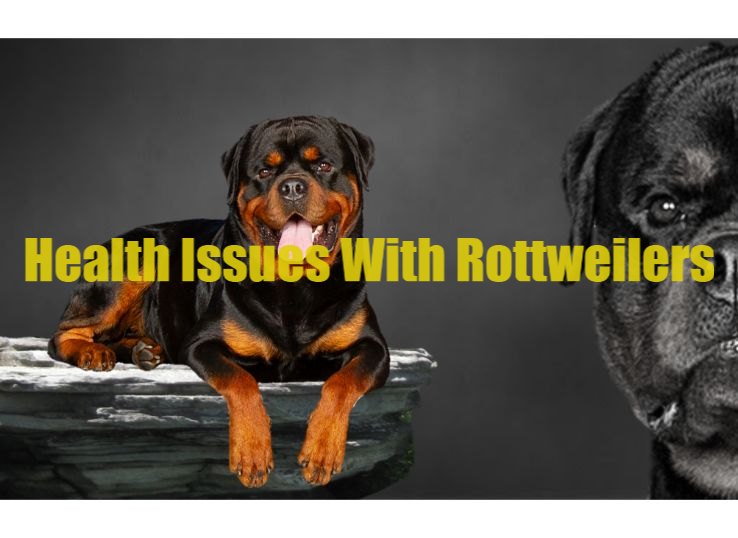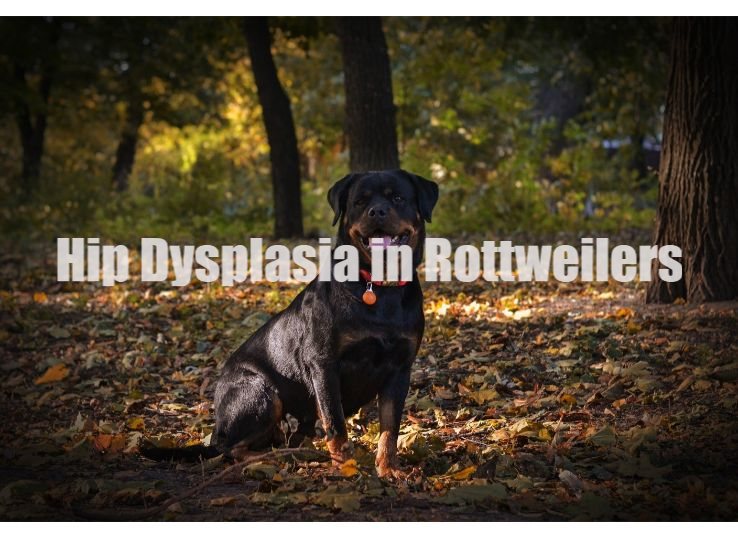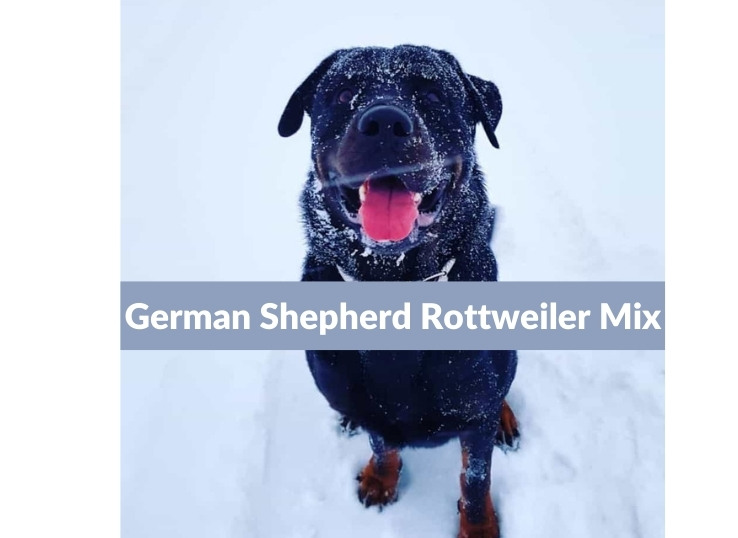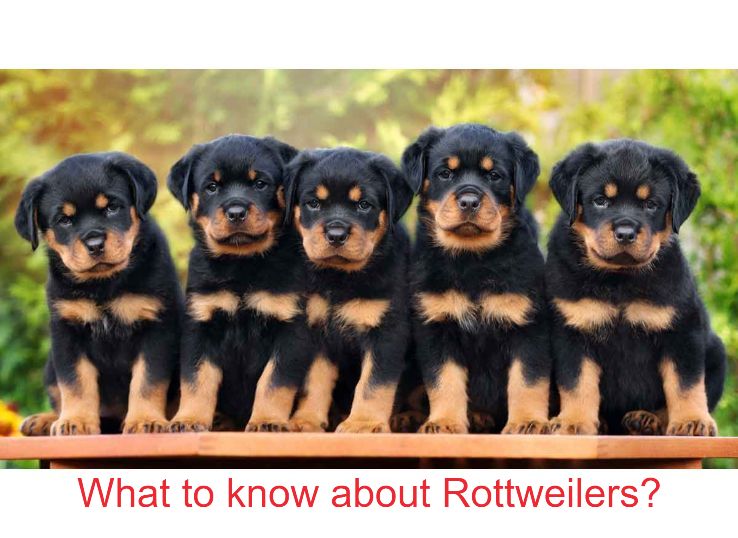What do Rottweilers look like? Latest Guide in 2024

Rottweilers are the robust descendants of mastiffs of the Roman regiment. If you are thinking about adopting a Rottweiler to cuddle in your lap, but you do not know what do Rottweilers look like? And what else you must know about this dog breed. We are here to give you information about the physical appearance of Rottweilers.
They are very playful and caring pets yet indifferent to their surroundings. The males look robust with 27 inches shoulder width, thick limb muscles, and black shiny hair coat. The hair color is usually black with tan spots. Let us discuss the physical features of Rottweilers in detail.
Table of Contents
What do Rottweilers look like? (Features of Rottweilers)
The Rottweilers are caring and loving pets. Despite that, they need socialization to become good companions. These animals have beautiful body features. Let us help you know about those features in detail.
Body Weight:
We usually use the Rottweilers as drover breeds for cattle, guardians of flocks, and as draft animals. The body weight is variable according to the age of the dog. However, the average weight for male Rottweilers is 85-135 lbs., and for females, it is 80-100 lbs.
Withers height:
The withers are the ridge between the shoulders of animals. It is the highest body point. In male Rottweilers, it is 26 inches, while in female Rottweilers, it is 24 inches.
Facial features:
Rottweilers have massive heads and flat ears. The ears are closer to the head and slightly hanging. The strong snout and square muzzles give a sturdy appearance to the face. These robust dogs have broad chests. They are slowly maturing dog breed.
Head shape:
What do Rottweilers look like is crucial to know to understand their nature? The Rottweilers have a broad face and triangular blunt shape head. This head shape makes them look broader in proportion to their original body size.
The cheekbones are underdeveloped, and the maxillary arches are overdeveloped. This proportion gives a slim, extended shape to the muzzle. These dogs have good snatch as well.
Hair coat:
The body hair coat in Rottweilers is short, shiny, and flat. This hair grows slowly and usually needs lesser grooming. The hair coat is black with tan markings.
Longevity:
They usually have a life span of 8 to 11 years. However, with care and affection, they can survive even longer.
Other features of Rottweilers
The Rottweilers are a very active dog breed, but they need special attention for social adjustments. If you are looking for the first impression of what do Rottweilers look like? Adult Rottweilers look longer and taller than average dogs. They weigh over 55 kilograms, showing that they look not only robust, but in fact, they are a strong breed.
1. Behavior of Rottweilers
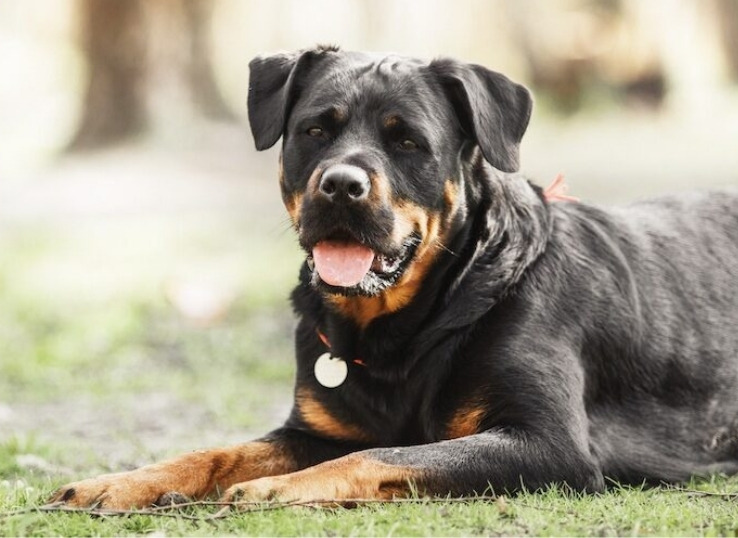
Knowing What do Rottweilers look like, you must understand how they behave. Understanding the behavior will make you a good dog parent if you want to keep a Rottweiler as a pet. The males are usually aggressive and dominant. However, if you continue to socialize your dog regularly, they learn to adjust to their environment.
If you want to keep a Rottweiler male, it is better to train it as a puppy. Grown adult rottweilers can cause a nuisance, as they bark a lot, and they can become aggressive as well. They’re very good at guarding herds and protecting the children. These dogs easily get along with kids. However, if you are keeping a pet dog for the first time, you might face difficulty making a bond with a Rottweiler.
2. Health status:
The information about How do Rottweilers look like? It Can also help you determine the common health problems of Rottweilers. The most common health problems in these dogs are bone cancer and obesity. To prevent these diseases, you must follow a regular exercise and walk routine for these dogs.
They have a broad muzzle and loose lips. These characters cause the drooling of saliva from the oral cavity of these dogs. However, this drooling is physiological and does not show any medical condition.
3. Historical background of Rottweilers
The Rottweilers are one of the most ancient dog breeds in the world, having their roots in the ancient roman empire. This dog breed started in Germany in the town of Rottweil. They developed this breed from the family of Mastiff dogs. Later, it led to the birth of the Doberman Pinscher breed.
Over the eras, Rottweiler dogs flourished as a market part for livestock, the German corresponding to a Texas cowtown, and the progenies of the Roman Molossus canines drove the cows to town for slaughtering. To have their money safe from robs after marketing their cattle, the cattlemen placed their filled purses around their Rottweiler do’s neck once they came back home. Slaughterers in the area also utilized the dogs for pulling farm carts loaded with meat.
4. Personality of Rottweilers
Rottweilers have been specific for guarding and protection jobs, which should be kept in mind. Well-socialized Rotties get along attractively with people and other pets; however, males can be a bit violent and dominant. Energetic, intelligent dogs, Rottweilers are fully self-assured enough to act, requiring guidance from the start.
When left to their strategies, Rottweilers can become trouble barkers or diggers. Bred to work, these dogs do best with training. Aggression can be an issue, and this pooch is capable of imposing severe damage; thus, Rottweilers require a firm, easy-going hand and an educated owner.
Who is the best person for a Rottweiler?
Like several dogs, they feed off human’s energy. Besides, Rottweiler puppies perform well with a peaceful, self-assured human and flourish in well-structured surroundings. A lot of chaos might cause hindrance in a Rottweiler’s world; thus, these dogs are appropriate for someone having a routine that doesn’t change frequently.
Most notably, they love to deliver and receive love. Rottweilers need physical touch and can follow you everywhere, tilting their heads on your legs. Rottweilers are attached to their human for life and need to show their affection!
Frequently asked questions
Here are some questions that people frequently ask about Rottweilers dog breed.
- What should a Rottweiler look like?
Rottweilers are medium to large-sized dog breeds with broadheads and large faces. The lower lips are loose, and they can look like drooling due to loose lower lips. The ears are large and placed closer to the head. The body hair coat must be short, dense, and shiny. The body color must be black and tan in these pets.
- What should a Rottweiler head look like?
Viewed above and front, a Rottweiler head looks like a blunt angle triangle. There is a curve from forehead to muzzle. The overall appearance of the head is slim, and the frontal bone is flat. The cheeks are blunt and broad, giving a massive shape to the head.
- What is special about the Rottweiler’s appearance?
The Rottweilers look strong and intense due to their broader face and muzzles. Due to these facial features, they are very popular as guarding and caring dogs. The chest is broad and muscular, indicating strength. Just as their appearance shows, the Rottweilers are the best dogs for guarding and protection.
- Is Rottweiler a combo of two breeds?
The original Rottweiler breed is a descendant of German Mastiffs. They are not a mixed breed themselves. However, they appear to be a part of many mixed breeds. Such as, German Rowttie is a combination of a German shepherd and Rottweiler.
Conclusion:
We hope that now you know What do Rottweilers look like. The appearance of the dog they have explains a lot about the personality of the dog owner as well. The Rottweilers look fierce, aggressive, and strong animals.
These traits make them perfect guarding duties. However, they are very caring and playful if you train them well with patience. The Rottweilers are also popular pets for dog shows and beauty competitions. Hence the body conformation must be perfect if you want your pet to take part and win these competitions.


